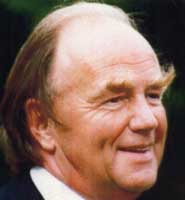This is not to suggest that Tom was without challenges; he took to ‘Industrial Aerodynamics’ in a big way and, much to the nation's benefit, contributed to the building codes (for wind-loading on major structures) that have outlasted him, let alone the book he wrote. The list of firms for which he consulted was 'top-drawer'.
After early education in Leeds, including its University, Tom took the nation's most popular (and difficult) Masters-level degree (the D.I.C. at Imperial College) when it was far from common to do any post-graduate studies, gaining that degree in 1947. He joined the University (1949, the year after marrying Pauline) when Engineering was still 'down the hill' at College Green, and then made major contributions to the Department's biggest new wind tunnel when the Faculty moved to Queen's Building in the late '50s. Former students remember him for the breadth of his teaching: not just aerodynamics, but flight mechanics, satellite orbits, structures and much more. Collar's edict was to ‘hire good men and let them get on with it’. Tom did just that, even beyond his early retirement in 1983, not to suggest that he was less busy in the years afterward. Indeed, his work spawned a model-making business in Bristol to keep pace with his studies of new building developments. His work earned him a Fellowship of the Royal Academy of Engineering.
While being one of the quieter members of the Department, Tom also gave huge support to his family and will be remembered for his love of all generations.
